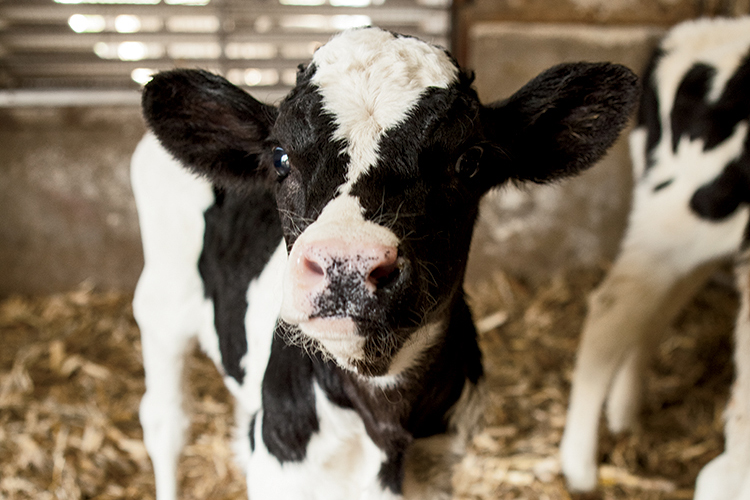Home > Wisconsin > Wisconsin Crops & Livestock > Wisconsin Dairy Farms Are Milking the Future
Wisconsin Dairy Farms Are Milking the Future
In partnership with: Wisconsin Department of Agriculture, Trade and Consumer Protection.

On a frigid January night in 2011, Monroe dairy farmer Stacy Eberle’s life changed forever. She and her husband, Randy, along with their four daughters, awoke to find the family home on fire. They escaped, but Randy went back in to try to put the flames out himself. He never came back out.
“We lost the total house, the contents and, unfortunately, my husband, the girls’ dad,” says Eberle. But in the aftermath, as well-meaning people gently urged her to get out of farming, Eberle resisted.
“The first few months, you’re just in survival mode, but I knew I wanted to keep going. And the girls were very supportive of keeping the farm and seeing what we could do.”

Determined to move forward with plans she and Randy had talked about for years, Eberle applied for and received a Grow Wisconsin Dairy 30×20 grant, one of 39 awarded in fiscal year 2012. The program, which awarded 44 grants in 2013 and 43 in 2014, distributes a total of just under $200,000 annually.
Grow Wisconsin Dairy 30×20 is a relatively new state initiative to ensure the long-term viability of Wisconsin’s dairy industry by providing assistance to dairy farmers – both financial and in expertise – regardless of the operation’s size. The goal is to achieve annual milk production of 30 billion pounds by 2020, because at this point, Wisconsin dairy farmers produce about 90 percent of the milk needed by the state’s dairy processors.
![Wisconsin Diary [INFOGRAPHIC]](https://eadn-wc01-4177395.nxedge.io/wp-content/uploads/2020/05/Screen-Shot-2014-10-21-at-2.58.03-PM.png)
“We’re looking at providing that outside expertise to augment their management, their operation system, business planning, legal, those types of things, to make them viable into the future,” says Mike Bandli, ag business development supervisor at the Wisconsin Department of Agriculture, Trade and Consumer Protection (DATCP). “What it really boils down to is: What tools can we put in their toolbox to help them achieve some of their goals to improve profitability, sustainability and viability?”
The producer grants, ranging from $3,000 to $5,000 each, help with business planning, engineering, animal nutrition, modernization efforts or generational transfer between farms.
That’s exactly what Tony and Moriah Brey needed when they sought a grant for Cycle Farm in Sturgeon Bay. The farm has been in the family since the early 1900s, and currently the buildings are owned by Tony’s parents and the cattle jointly between the two couples. Their 2013 grant is helping lay the groundwork to continue transitioning ownership from one generation to the next. It also provides relationships with experts such as crop consultants, whose work is already resulting in higher, more efficient feed production on the same amount of acreage.

“The grant is not intended to cover 100 percent of any project costs, but rather serves as a catalyst to move a project to the top of your list,” says Moriah Brey. “Those business and transition details can be just as important in the long run as being out in the field or in milking the cows.”
For Stacy Eberle, it was the modernization component of the grant that helped her move forward. Eberle used her grant to hire consultants to help design a new free-stall, open-floor-plan barn, allowing her to increase her herd size. And while the money helped, Eberle says even more valuable was the encouragement to keep her farming dream alive in the face of such painful challenges.
“It was a way of knowing that the support was out there. Knowing that Wisconsin wants to keep our dairy farms going,” says Eberle. “We’re very passionate about what we’re doing, and it’s nice to see that there’s support out there to keep us here.”
![Wisconsin Dairy [INFOGRAPHIC]](https://eadn-wc01-4177395.nxedge.io/wp-content/uploads/2020/05/Screen-Shot-2014-10-21-at-2.58.23-PM.png)



